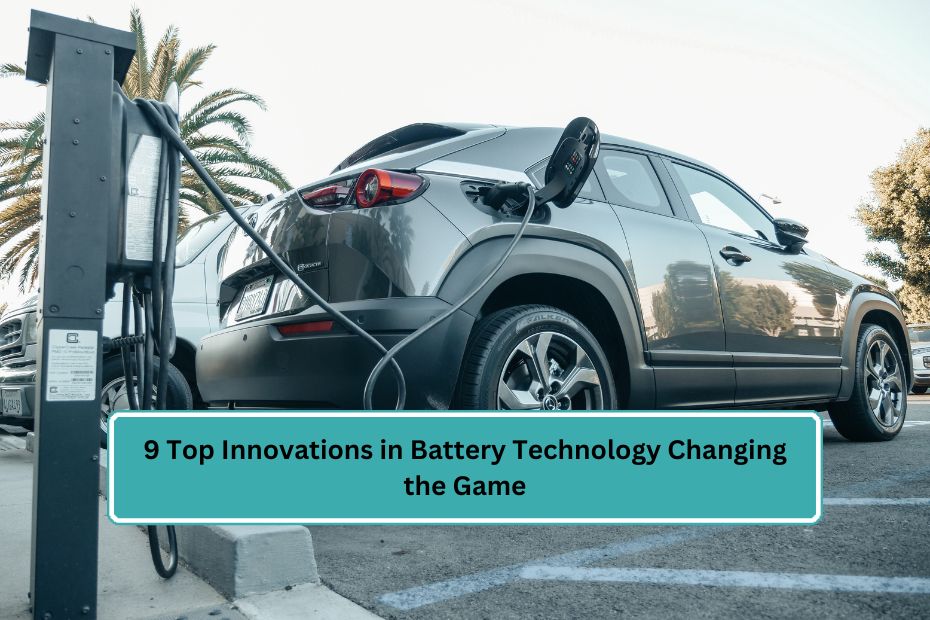Batteries play a crucial role in powering various devices and technologies, from smartphones to electric vehicles. With the growing demand for energy storage solutions, innovations in battery technology have become increasingly important. In this article, we’ll explore nine top innovations in battery technology that are changing the game and shaping the future of energy storage.
Battery technology has evolved significantly over the years, driven by the need for more efficient, reliable, and sustainable energy storage solutions. From lithium-ion batteries to emerging technologies such as solid-state batteries, researchers and manufacturers are constantly pushing the boundaries of what’s possible in energy storage.
Lithium-Ion Batteries
Lithium-ion batteries are currently the most widely used type of rechargeable battery, powering everything from smartphones and laptops to electric vehicles and grid-scale energy storage systems. These batteries offer high energy density, long cycle life, and relatively fast charging capabilities, making them ideal for a wide range of applications.
Solid-State Batteries
Solid-state batteries represent the next frontier in battery technology, offering several advantages over traditional lithium-ion batteries. By replacing the liquid electrolyte with a solid material, solid-state batteries promise higher energy density, improved safety, and longer lifespan. Additionally, solid-state batteries have the potential to enable faster charging and support a wider temperature range.
Graphene-Based Batteries
Graphene, a single layer of carbon atoms arranged in a hexagonal lattice, has emerged as a promising material for next-generation batteries. Graphene-based batteries offer high conductivity, rapid charge-discharge rates, and enhanced durability. Researchers are exploring various graphene-based battery designs, including graphene-wrapped electrodes and graphene-enhanced electrolytes, to improve performance and efficiency.
Sodium-Ion Batteries
Sodium-ion batteries are being developed as a low-cost alternative to lithium-ion batteries, particularly for grid-scale energy storage applications. Sodium-ion batteries use sodium ions instead of lithium ions to store and release energy, offering similar performance characteristics at a fraction of the cost. These batteries have the potential to drive down the cost of energy storage and facilitate the integration of renewable energy sources into the grid.
Aluminum-Ion Batteries
Aluminum-ion batteries are another emerging technology with the potential to revolutionize energy storage. These batteries use aluminum ions as the charge carrier, offering high energy density, low cost, and enhanced safety compared to traditional lithium-ion batteries. Aluminum-ion batteries are particularly well-suited for large-scale energy storage applications, such as powering electric vehicles and storing renewable energy.
Flow Batteries
Flow batteries are a type of rechargeable battery that store energy in external tanks of electrolyte solution. Unlike conventional batteries, which have fixed energy storage capacities, flow batteries can be easily scaled up by increasing the size of the electrolyte tanks. This scalability makes flow batteries ideal for grid-scale energy storage applications, where large amounts of energy need to be stored and discharged on demand.
Silicon Anode Batteries
Silicon anode batteries are a promising alternative to traditional graphite-based anode materials used in lithium-ion batteries. Silicon offers a much higher theoretical capacity for storing lithium ions, potentially leading to batteries with significantly higher energy density. However, silicon anodes face challenges related to volume expansion and degradation over multiple charge-discharge cycles, which researchers are actively working to address.
Zinc-Air Batteries
Zinc-air batteries are a type of metal-air battery that use zinc and oxygen as the reactants to generate electricity. These batteries offer high energy density and are relatively inexpensive to produce, making them attractive for a wide range of applications, including electric vehicles and grid-scale energy storage. However, zinc-air batteries face challenges related to limited cycle life and degradation over time, which researchers are striving to overcome.
Conclusion
Innovations in battery technology are driving significant advancements in energy storage, enabling the widespread adoption of renewable energy sources, electrification of transportation, and grid modernization. From lithium-ion batteries to emerging technologies such as solid-state batteries, graphene-based batteries, and beyond, the future of energy storage looks promising. By continuing to invest in research and development, we can unlock new possibilities and create a more sustainable and resilient energy future.
FAQs:
1. How do solid-state batteries differ from traditional lithium-ion batteries?
Solid-state batteries replace the liquid electrolyte found in traditional lithium-ion batteries with a solid material, offering advantages such as higher energy density, improved safety, and longer lifespan.
2. What are the advantages of graphene-based batteries?
Graphene-based batteries offer high conductivity, rapid charge-discharge rates, and enhanced durability, making them ideal for applications requiring high performance and efficiency.
3. What are the main challenges facing aluminum-ion batteries?
Aluminum-ion batteries face challenges related to electrode materials, electrolyte compatibility, and scalability. Researchers are actively working to address these challenges and improve the performance and reliability of aluminum-ion batteries.
4. How do flow batteries work, and what are their advantages?
Flow batteries store energy in external tanks of electrolyte solution and can be easily scaled up for grid-scale energy storage applications. Their scalability and long cycle life make them well-suited for storing large amounts of energy and supporting renewable energy integration.
5. What are the potential applications of zinc-air batteries?
Zinc-air batteries have potential applications in electric vehicles, grid-scale energy storage, and portable electronics. Their high energy density and low cost make them attractive for a wide range of energy storage applications.
